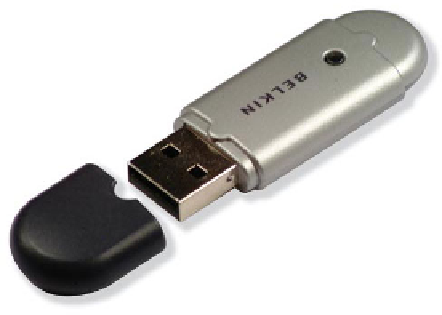Hardware Reference
In-Depth Information
FIGURE 3.15
USB Bluetooth adapter
Whereas Wi-Fi technology is designed to help devices participate in group networks,
Bluetooth is a one-to-one connection. For example, one cell phone headset can
communicate with exactly one cell phone at a time, and one Bluetooth-enabled notebook
computer can connect with exactly one Bluetooth peripheral device per adapter.
For Bluetooth connectivity, both devices must support it and must have Bluetooth
transmitter/receivers. Most notebook computers today come with Bluetooth adapters built
in; most desktop computers don't. You can add Bluetooth support to almost any computer
via a USB adapter. Bluetooth adapters, like other network adapters, have MAC addresses.
Bluetooth devices come in three classes. Each class has a different maximum range, from
1 meter to 100 meters, and a different data transmission rate, between 1 Mbps and 24
Mbps, as listed in Table 3.4.
TABLE 3.4
Bluetooth classes
Class
Maximum Data Rate
Maximum Distance (Meters)
1
1 Mbps
1
2
3 Mbps
10
3
24 Mbps
100
A decade or so ago, infrared (IR) connections were commonly used for
very-short-distance wireless communication between devices, such as
to exchange data between PDAs or notebook PCs. But IR is inferior to
Bluetooth in terms of range and reliability, and it requires a clear line of
sight between the two devices. Thus it's seldom used anymore.
























